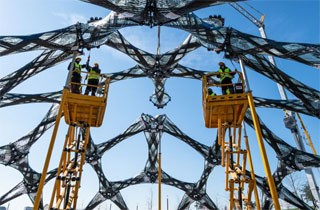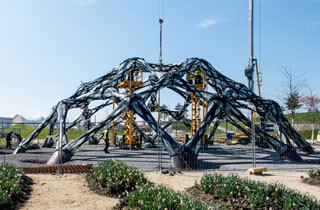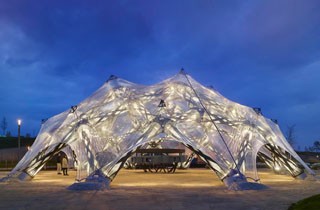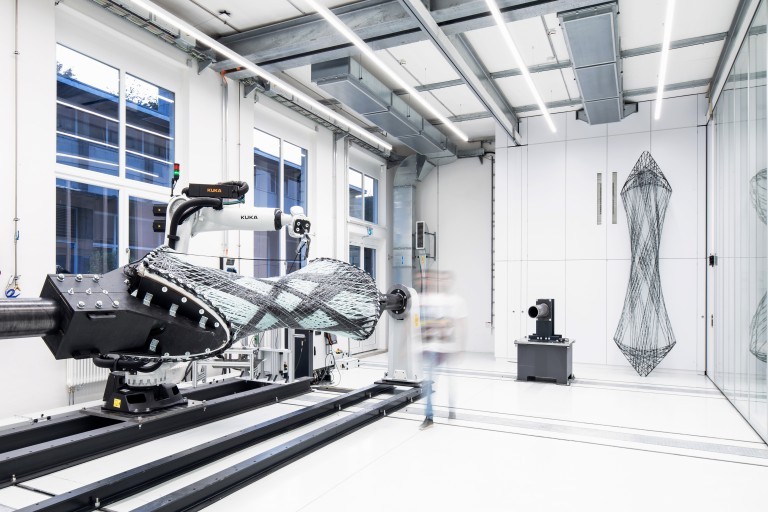Using nature as a blueprint for building
Nature is often the best teacher. In this case, the orientation, alignment and density of the fibers of biological structures offer a template for unique building: a filigree and resource-efficient fibre-construction that is at once light, strong and stable. After years of bionic research, researchers of the University of Stuttgart’s Institute for Computational Design and Construction (ICD) and the Institute for Building Structures and Structural Design (ITKE) have developed a fibre pavilion for the federal horticultural show, in Heilbronn, Germany. The building combines cutting-edge computational technologies with construction principles adopted from nature, thus enabling a truly new construction system. The pavilion’s supporting structure consists exclusively of fibre-composite components that have been precisely fabricated by robots, in an additive-manufacturing process. The result is an elegant 23-metre-wide pavilion that is five times lighter than comparable steel structures—a demonstration for future-oriented, high-performance, lightweight structures.
Partner:
(ICD) Institut für Computerbasiertes Entwerfen und Baufertigung, Universität Stuttgart
Prof. Achim Menges, Serban Bodea, Niccolo Dambrosio, Monika Göbel, Christoph Zechmeister
(ITKE) Institut für Tragkonstruktionen und Konstruktives Entwerfen, Universität Stuttgart
Prof. Jan Knippers, Valentin Koslowski, Marta Gil Pérez, Bas Rongen
FibR GmbH, Stuttgart
Moritz Dörstelmann, Ondrej Kyjanek, Philipp Essers, Philipp Gülke
Bundesgartenschau Heilbronn 2019 GmbH
Hanspeter Faas, Oliver Toellner






